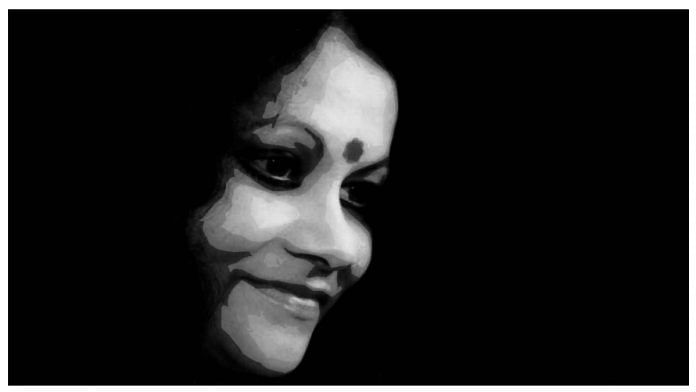New Delhi: “She once told me that she regarded her writing as an act of worship,” literary critic and social scientist from Assam, Professor Hiren Gohain wrote about Indira Goswami, known by her pen name Mamoni Raisom Goswami, and when one reads her work, that sense of devotion, to her subject and her craft, shine through.
Goswami was born on 14 November 1942 at Amranga in South Kamrup, Assam, to an affluent Vaishnavite Brahmin family who owned a sattra (monastery). She completed her masters in Assamese literature from Guwahati University in 1963, and had already published her first collection of short stories, Chinaki Morom, the previous year. She completed her doctorate in 1973.
The prolific writer (of novels, short stories, poetry, non-fiction) and Delhi University professor suffered from depression since her childhood. Her first marriage, in 1965, ended the same year and her second husband Madhaven Raisom Ayengar, died in a car accident just 18 months after they had married in 1966. These incidents left an indelible mark on her already fragile state – she wrote in her autobiography about her suicidal thoughts. It was her craft that saved her. “Writing was never my career. It was my passion …I write to enjoy my life. Without writing, I would have been a dead person,” she once said.
Mamoni Raisom Goswami has been the recipient of a number of awards, including the Sahitya Akademi award, the Jnanpith, the Padma Shri (which she refused to accept), the Asom Ratna, the Katha National Award, the Prince Claus award from the Netherlands and a number of honorary doctorates. Such was her influence that she even mediated between the ULFA and the government.
The pioneer of feminist Assamese literature, Goswami, despite her own relative privilege, felt deeply the impact of patriarchy and socioeconomic oppression on less privileged communities, and wrote extensively about them.
On her birth anniversary, ThePrint examines six of her most iconic works.
Datal Hatir Uye Khua Howda (The Moth-Eaten Howdah of a Tusker)
Set between the early 19th century and India’s independence, the novel depicts the atrocities inflicted on women, notably Hindu widows, by feudal monarchs in monasteries. The novel revolves around the lives of three female characters — Durga, Saru Gossaine and Giribala, who were forced to eat, live and interact as per the deeply patriarchal norms of the ashram. Goswami’s own childhood experiences and her time in Vrindavan, spent researching the lives of widows, form the backdrop of this classic, as she writes of the emotional, physical and social deprivation of women victimised by the typical feudal Vaishnavite sattra system. The book was adapted to a National Award-winning film Adajya in 1996.
Adha Likha Dastabej (An Unfinished Document)
Goswami’s autobiography deals with her experience of chronic depression from the time she was very young. As a child, Goswami was obsessed with suicidal thoughts and in this book, she writes about her desire to jump off the cliff of Crinoline Falls in Shillong. After the death of her husband and father, she had a major mental breakdown and tried to commit suicide by gulping sleeping pills. The autobiography also contains the story of her aunt, who was widowed at an early age and was forced into a life of misery by the social conventions of an orthodox Hindu society.
Chhinnmasatar Manuhto (The Man From Chinnamasta)
One of Mamoni Raisom Goswami’s most controversial novels, it deals with Goswami’s experiences of witnessing animal sacrifice at Kamakhya Mandir, Assam, as a child. Her description of the traditional ritual, provides the reader with a vivid imagery of blood stains on the temple floor after the sacrifice, the temple bells ringing and the body of the helpless animal lying on the altar. Goswami faced backlash for this book, as angry priests and religious organisations threatened her for portraying the ritual as sadistic. However, this novel is considered one of Mamoni Raisom’s masterpieces and went on to be a great success.
Jatra (Journey)
“Assam’s peace process today is a result of what Mamoni Raisom Goswami started,” Assam’s former chief minister Tarun Gogoi said when offering his respects to the writer after her death in 2011.
This book, about the militancy and insurgency that the state of Assam witnessed for a long time, is an important one in the history of the Assam peace process. Goswami not only wrote about the state’s three decade long insurgency, but acted as a mediator between the United Liberation Front of Assam ULFA and the state government, to broker peace in Assam. Due to her efforts, the rebel group agreed to come to a negotiation with the Assam government. Goswami was awarded the state’s highest civilian award, Asom Ratna for her outstanding contribution in the field of art, literature, culture and social service.
Neelakantha Braja (The Blue-necked God)
Published in 1976, this fusion of reality and fiction narrates the story of a widow, Saudamini, suffering from physical, emotional and financial deprivation. Goswami’s own experiences as a widow in Vrindavan find expression in the book. She weaves the story into a bold narrative against hard traditions and the socio-religious sanction of the ill treatment of women.
Tej Aru Dhulire Dhushorito Prishtha (Pages Stained With Blood)
Initially published in Assamese, in the literary journal Goriyoshi, the novel created controversies over the love story of a Delhi University professor and a rickshaw puller. As in all her writings, in this novel too, Mamoni Raisom Goswami uses her surroundings as the stage. She depicts the sufferings of the people during the 1984 anti-Sikh riots and the consequent assasination of the then Prime Minister Indira Gandhi. The book explores the mental and emotional crisis of the university professor during Operation Blue Star in Amritsar’s Golden Temple.
Also read: Identity, music & Bhupen Hazarika: The man who united Assam, talked inclusivity



